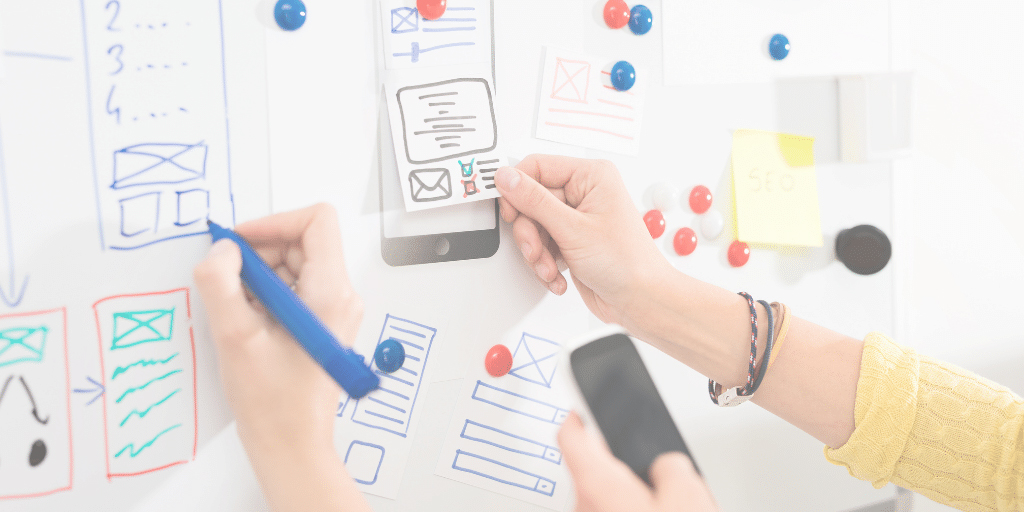Have you ever run into the words Design Thinking and User-centered Design (UCD) and wondered what the heck is the difference? Are these terms interchangeable?
You’re not alone.
And if you’ve dug deeper you may even find the methodologies are quite similar; using different terminology the design process is basically the same – putting the focus on the end-user. So what is the difference between them then?
Design Thinking Process
User-centered Design Process
What is Design Thinking
While both Design Thinking and User-centered Design are about putting yourself in the shoes of the end-user, the primary difference between the two is that Design Thinking is a method to develop solutions to solve the end-users’ problem, which are not solely user-interface related, as with User-centered Design. Design Thinking relies heavily on innovation and ideation to create solutions, and can be applied to service, policy or process design, or to come up with a new product idea.
Design Thinking utilizes an iterative five-step process, that can be applied to all industries and organizations to reinforce innovation, solve problems, strengthen leadership and boost creativity, while helping users better understand their end-clients’ needs and provide the best possible services and solutions for their end-clients. The five step Design Thinking process includes:
- Empathize phase – personifying end-users to understand their challenges and needs
- Define phase – pinpointing the end-user challenges that need to be solved
- Ideate phase – selecting solutions to prototype with end-users
- Prototype phase – prototyping solutions; initially low fidelity, but increasing fidelity through iterations
- Test phase – testing solution prototypes with end-users
* Continue to iterate between ideate/prototype and test until you have a satisfactory solution to defined challenge(s).
To learn more about how to adopt design thinking tools into your processes, check out our courses Design Thinking for the Public Sector (Level 1) and the Public Sector Design Thinking Certification.
What is User-Centered Design
Also placing emphasis on the end-user, User-centered Design is specifically applied to digital processes and interfaces. Part of the ISO92400 regulation, User-centered Design is a term developed by the software industry as a practice for developers who care about the user of their digital tool. The process centres around enhancing user satisfaction with a product by improving the usability, accessibility, and pleasure provided in the interaction with the product.
User-centered design asks designers to employ a mixture of investigative (e.g., surveys and interviews) and generative (e.g., brainstorming) methods and tools to develop an understanding of user needs. The UCD process doesn’t prescribe specific methods or tools to use, however, as with Design Thinking, UCD does provide concrete steps for application. The five-step UCD process includes:
- Research phase – typically contextual enquiry, or interviews
- Concept phase – ideating concept prototypes to design and test
- Design phase – initially medium fidelity, but increasing fidelity through iterations
- Develop phase – building the de-risked design
- Test phase – utilizing the developed product
* Continue to iterate between design/test and build until you have a satisfactory product.
At a high-level it is easy to conclude these terms are very similar; both frameworks aim at insuring the users’ needs are at the centre of the tool created. However, upon closer inspection, the concept of Design Thinking is broader, with more applications than that of User-centered Design. The former focuses on innovation and ideation, and is about finding user-focused solutions to develop products, policies and services to meet user-needs, whereas the latter applies to the creation of user-focused digital interfaces.
For more information, check out Spring2 Innovation’s YouTube channel:
View our past webinars here, to learn more about Design Thinking and the Deeper Clarity Method.
Ready to implement Design Thinking in your processes? Click here to enroll in one of our Design Thinking courses today!

